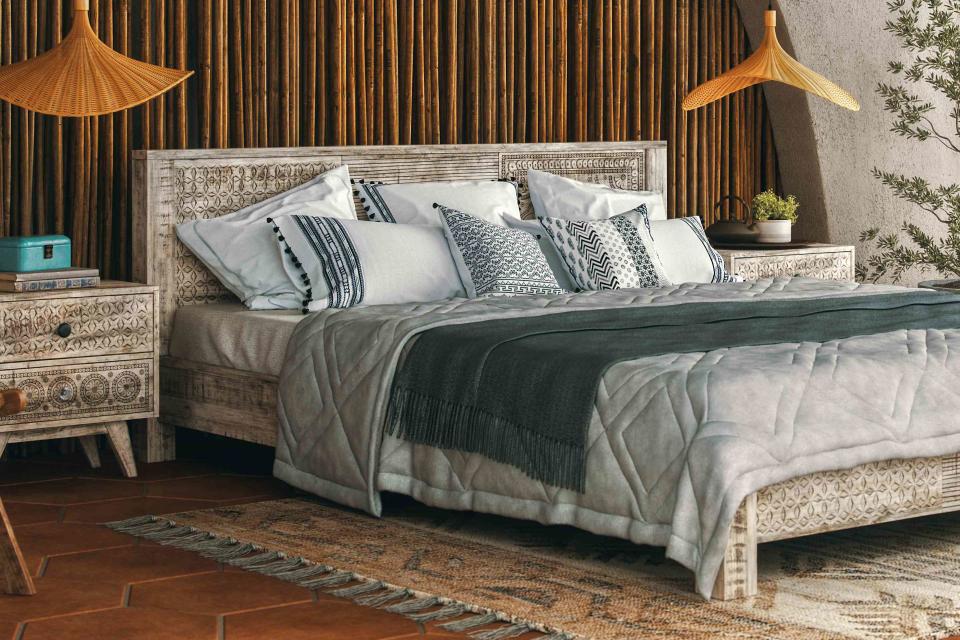What Is a Pillow Sham? We Asked Bedding Experts
It's safe to say they're more about form than function.

Imaginima/Getty Images
Between duvets, inserts, pillowcases, fitted sheets, and so on, there are many components to a well-made bed. And a well-made bed that looks good will often include pillow shams, which are not the same as pillowcases and shouldn’t be treated as such. We asked bedding experts to clarify what exactly is a pillow sham and how it’s different from other types of pillows and cushions.
Related: How to Choose the Right Pillow for Your Best Night of Sleep
Meet Our Expert
Amy Hoban, chief creative officer of Parachute
Melanie Kaplan, director of product development from The Company Store
What Is a Pillow Sham?
Simply put, a bedding sham “is part pillowcase, part throw pillow cover,” says Melanie Kaplan, director of product development from The Company Store. It slips over a sleeping pillow and secures in the back or on the side, and it’s primarily used as a decorative bedding item. So they're not necessary, but they're nice to have!
“Shams aren’t meant to be slept on, although they can be, but they’re intended to bring interest to the bed. In addition, some shams may have decorative appliques or embroidery which would make sleeping on them uncomfortable,” Kaplan adds.
What Is the Point of a Sham?
On top of just looking nice, Amy Hoban, Parachute’s chief creative officer, says, “Incorporating a sham into your bedscape can also serve the purpose of protecting the actual pillowcase that you sleep on each night and preserving its overall cleanliness and quality.”
Hoban says it’s “perfectly fine to sleep on a sham,” but they typically serve the primary purpose of “jazzing up” your space. It’s recommended that shams either be removed from a standard pillow before use or to limit their use to an accessory or as an extra layer of comfort and support. Plus, Kaplan adds, many shams are embellished with decorative appliques and embroidery so it may not be the most comfortable experience.
What Is the Difference Between a Pillowcase and a Sham?
According to Kaplan, a sham typically opens from the back and is more decorative in nature, while a pillowcase slips onto the pillow from the side and is designed to sleep on every night. “In addition, shams are typically sized to fit standard size, king size, and Euro pillows, while pillowcases fit only standard and king size pillows,” she elaborates.
Meanwhile, a decorative pillow cover is smaller in size than a sham so it can be used to add some style to the bed, couch, chair, etc.
Related: The 10 Best Pillows of 2024, Tested and Reviewed
Types of Shams
Like we mentioned earlier, there are varying sham sizes so they fit standard pillows, king-size pillows, and Euro pillows (which are typically 26” x 26”). Fabric types used to make shams may include cotton percale, cotton sateen, flannel, linen, cotton voile, and rayon made from bamboo, Kaplan says.
How Often Should You Wash Your Shams?
Both Hoban and Kaplan agree that if you’re not sleeping on your shams, you can get away with washing them once a month, following the directions on the care label, to preserve the material and structure. Hoban adds that if you are sleeping on your shams, “We recommend treating them to a wash every seven to ten days, just like you would your sheet set.”
For more Real Simple news, make sure to sign up for our newsletter!
Read the original article on Real Simple.

